By Karen Vidangos, social media strategist for Our Shared Future: Reckoning with Our Racial Past
Throughout American history, women of color have worked to protect and strengthen themselves and their communities. Often performed by women, health and wellness labor frequently goes uncelebrated.
Our Shared Future: Reckoning with Our Racial Past, a Smithsonian initiative exploring the history and legacy of race and racism in the United States and globally, partnered with the Smithsonian American Women's History Initiative to share stories of women whose work centered wellness. Wellness is one of the six pillars for Our Shared Future: Reckoning with Our Racial Past. An equitable future is one where people of all races can not only live but live well.
Here are five stories, first posted to Smithsonian social media, about American women of color whose work prioritized individual and community wellness.
1. Dr. Sarah Loguen Fraser
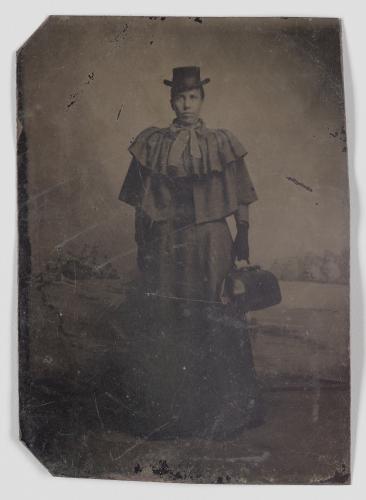
Tintype of a woman carrying a medical bag, from around the 1890s. Collection of the Smithsonian National Museum of African American History and Culture.
Researchers believe this is Dr. Sarah Loguen Fraser, an 1876 graduate of Syracuse University College of Medicine. Loguen Fraser educated Black midwives how to integrate modern medical knowledge into their traditional routines.
Born Marinda Sarah Loguen, Loguen Fraser attended Syracuse in the years following the end of slavery. She was the fourth African American woman doctor in the United States. She was also one of the first women to specialize in obstetrics, the care of women giving birth, and pediatrics, the care of children.
The State University of New York Upstate named a street after her, Sarah Loguen Place, and established the Dr. Sarah Loguen Child Care Center.
2. Gladys Tantaquidgeon
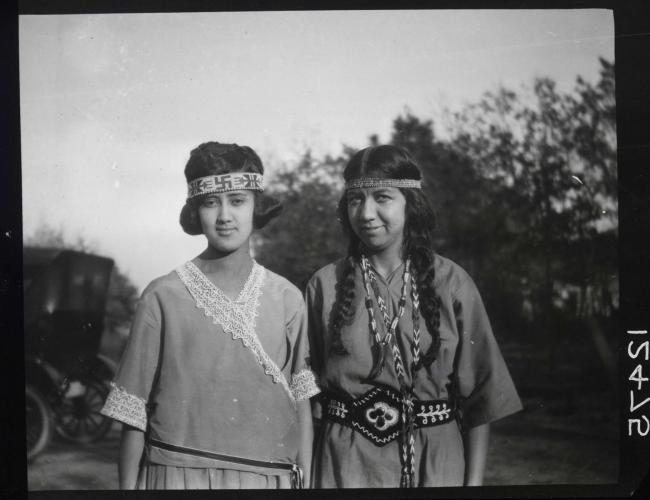
Portrait of Jane Harmon (Nanticoke) and Gladys Tantaquidgeon (Mohegan), 1922. Frank Gouldsmith Speck photograph collection, National Museum of the American Indian Archive Center, Smithsonian Institution.
Born in 1899, Dr. Gladys Tantaquidgeon was a Mohegan medicine woman and anthropologist, shown on the right in this photo. She published significant works on tribal knowledge and on the use of local natural resources to create traditional herbal medicines. At the age of 20, she was invited to continue her studies at the University of Pennsylvania, a male-dominated institution at the time.
To preserve her tribe's threatened culture and practices for future generations, Tantaquidgeon cofounded the Tantaquidgeon Indian Museum in Uncasville, Connecticut, in 1931. It is the oldest museum in the United States owned and operated by Native Americans.
During the 1970s, Tantaquidgeon served as a member of the Mohegan Tribal Council. In 1994, she provided critical research that helped the tribe receive federal recognition. She was widely recognized for her dedication to indigenous knowledge, traditional practices, and social justice efforts. She was awarded honorary doctorates from the University of Connecticut in 1987 and Yale University in 1994.
Note about the image: The swastika on Jane Harmon (Nanticoke)'s headband reflects a symbol used by many cultures throughout the world before it was co-opted by Germany's Nazi party. In the Americas, it predates the arrival of Europeans. From the late 1800s through the early 1900s, it was popularly used on Southwest jewelry, textiles, and other arts and became widely perceived as a typical American Indian design motif. The symbol has different meanings in different Native American communities, but it often represents four winds, four directions, or good luck or well-being.
3. Salsa Soul Sisters
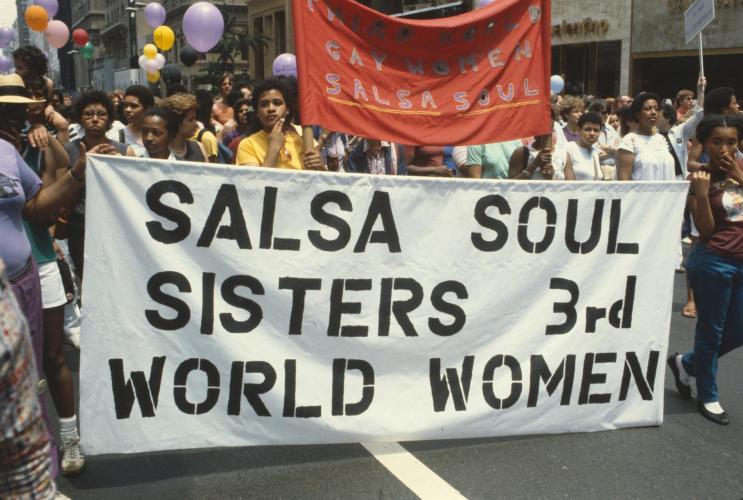
Photographic slide of marchers with "Salsa Soul Sisters" banners by Dr. Ron Simmons, 1983. Collection of the Smithsonian National Museum of African American History and Culture, Gift of Ron Simmons.
Founded in 1974 by Reverend Delores Jackson in New York City, the Salsa Soul Sisters Third World Gay Women Inc. was the first known Black lesbian organization in the United States. With a name designed to welcome Black and/or Latinx women, the group was inclusive of Asian American and Indigenous women who identified as LGBTQ+.
The group created a space for women of color to gather and discuss their shared experiences facing sexism, racism, and discrimination. Through retreats, protests, and weekly meetings, they empowered each other by creating a network of support. As member Cassandra Grant remembered, "We were a village taking care of itself...Salsa Soul was a catalyst for an emerging community that addressed the question, how do we live a better life."
Groups that emerged from Salsa Soul Sisters Third World Gay Women Inc., such as African Ancestral Lesbians United for Societal Change, are still active today.
4. Committee to End Sterilization Abuse
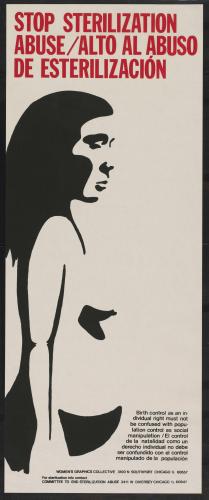
Stop Sterilization Abuse/ Alto al abuso de esterilizacion poster by Women's Graphics Collective, from around the 1970s. Collection of the Smithsonian National Museum of American History, credit Women's Graphics Collective.
This "Stop Sterilization Abuse" poster was created by the Women's Graphics Collective. Between 1970 and 1980, the Collective created posters and graphics in support of women's rights. The posters were often displayed in clinics and women's centers.
Forced sterilization was legal in many states beginning in the 1900s. In 1970, Congress passed the Family Planning Services and Population Research Act. This act provided funds for contraceptive programs, including grants to medical facilities that performed voluntary sterilizations. Medical professionals often forced sterilization procedures without consent, through coercion, or without patients' knowledge, to receive financial incentive. Some women were threatened with losing their welfare benefits or told they could not give birth in the hospital unless consent for sterilization was given.
Congress passed the act in 1970 amid concern about global overpopulation and its possible negative effects on the economy, government resources, and the environment. Driven by racist, classist, and ableist beliefs that the human population would be improved if only certain people reproduced; family planning services were aggressively offered and forced upon low-income, disabled, and incarcerated women, particularly if they were Black, Latina, or Native.
This English-Spanish poster helped connect women with the Committee to End Sterilization Abuse.
5. Ntozake Shange
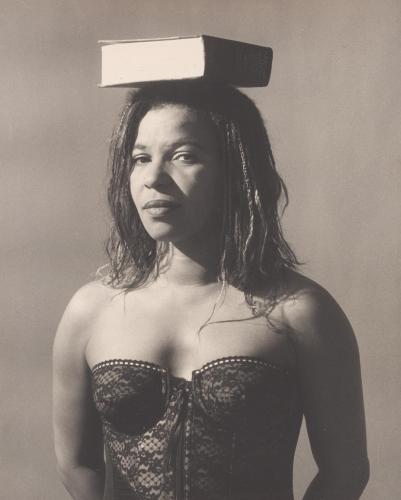
"Ntozake Shange" by ADÁL, 1994. Gelatin silver print. National Portrait Gallery, Smithsonian Institution; gift of the artist. © 1994 ADÁL
In the early 1970s, poet and playwright Ntozake Shange began developing a play rooted in the experiences of contemporary Black women.
Referred to by Shange as a "choreo-poem," the 1975 work, for colored girls who have considered suicide / when the rainbow is enuf, follows seven Black women who share poetic monologues of love, abuse, and sisterhood accompanied by dance and music. When it reached Broadway in 1976, it was hailed for its powerful and passionate storytelling.
Inspired by her battle with depression, Shange's work explored healing. It also reflected her fierce commitment to empowering women of color by honoring their struggles and celebrating their strengths in a society that ignores the plight of Black women.
Related Posts
Karen Vidangos is the social media strategist for Our Shared Future: Reckoning with Our Racial Past. Her work explores the history and legacy of race and racism in the United States and globally.